Orígenes mayas en Antigua sur de la India
Nota del templo foto arriba y su semejanza en color y estilo a la de los egipcios. pirámides de América del Sur son, por supuesto, relacionados con las pirámides de Egipto. Si los mayas tienen mucho en común con los egipcios, entonces deben compartir un origen común. Los egipcios proceden del sur de la India.
"Bajo el reinado de Vishvamitra, primer rey de la dinastía de Soma -Vanga, como consecuencia de una batalla que duró cinco días, Manu -Vina, heredera de los antiguos reyes, siendo abandonadas por los brahmanes, emigró con todos sus compañeros, pasando a través de Arya, y los países de Barria, hasta que llegó a las costas de Masra [Cairo]."(Historia de la India, por Collouca-Batta). Sin lugar a dudas esta Manu-Viña y Menes, el primer rey de Egipto, son idénticos.
Arya, es Eran (Persia); Barría, es Saudí y Masra, era el nombre de El Cairo, que hasta hoy se llama, Masr, Musr y Misro. nombres fenicios historia Maser como uno de los antepasados de Hermes ".
"Egipto misma tenía, en esas edades desconocidas cuando Menes reinó recibido sus leyes, sus instituciones sociales, sus artes y sus ciencias, de la India pre-védica."
Menes es sin duda el Manu de la segunda sub-raza (5.2 Antiguo Egipto) y hay una estrecha relación con la India, que persiste hasta el día de hoy - como cualquier viajero a ambas naciones dan fe. Si los mayas tienen una 'identidad perfecta de los ritos, ceremonias, tradiciones' de Egipto, entonces es una prueba más de que su génesis está en la India, también conocido como 'Bharata' en la antigüedad.
"Definitivamente hay una conexión importante entre la gente mayor védicos y Maya-antepasados. Los mayas son en realidad se refiere el Mahabharata, una de las principales escrituras hindúes, como una tribu de haber dejado el subcontinente indio. Hay fuentes que han revelado las personas a ser los mismos que los nagas, una de las tribus indias más antiguas grabadas. Esos nagas parecen haber sido un pueblo, más tarde llamado Danavas, con un capital Nagapur. Se les conoce en otro principal hindú-escritura, el Ramayana, como pertenecientes a una tribu Naga-Maya, que se dice que ha transmitido su cultura hacia Babilonia, Egipto y Grecia ".
Naga es la palabra sánscrita para serpiente o serpiente. La serpiente emplumada representa al Dios Kukulcán o Quetzalcoatl Maya, un Cristo / Krishna figura similar. En esos días la religión antigua serpiente que se refiere a las serpientes de la sabiduría. Mercurio o Hermes (Narada - ver más en el texto) - su símbolo es el caduceo: dos serpientes entrelazadas alrededor de un bastón.
"Los cuatro grupos principales de la antigua India fueron los Asuras (asirios o del valle del Indo personas), Panis (fenicios), Yakhus o Yakshas (sujetos de Kubera, dios de oro y tesoros aka nagas) y los mayas. Los conocemos hoy en día como los drávidas (tamiles, malayalam, etc.)
La gente no Indus Valley en los días antiguos eran muy supersticiosos y temeroso de los mayas. Estos últimos eran excelentes expedidores internacionales y los comerciantes, los constructores y los astrónomos. Sus enemigos supersticiosas pensado sus logros tenían que ser mágica y más allá de la capacidad humana. Finalmente fueron conducidos a Ceilán, donde habitaban la provincia de Maya. Más tarde, fueron a las Américas, después de haber sido llevado allí por Kubera y su Yakshas." 'Ceilán' en aquellos tiempos antiguos era más que probable que la tierra ahora hundida hacia el sur de la India y conectado geográficamente al Ceilán de hoy, Sri Lanka . Este es el antiguo país del Tamil de los cuales el actual Tamil Nadu en la India no es más que un pequeño remanente:
La habilidad de los astrónomos mayas también es bien conocida:
"Estudios recientes sugieren un vínculo entre el valle del Indo y los mayas de América Central. Los estudios se centraron en los calendarios de los dos civilizaciones avanzadas. Los habitantes del valle del Indo siguieron un calendario basado en los movimientos de Júpiter, y los mayas siguieron una basada en la Venus. En los Puranas, una escritura hindú secundaria, Júpiter, Brihaspati, fue reconocido como el líder de los dioses, mientras que Venus, Shukra, era el líder de los asuras. Los textos afirman, además, que los devas y asuras vivían en lados opuestos de la Tierra.
México y la India están en lados opuestos de longitud. Las correspondencias se señalaron por BG Siddarth, director del Centro de Ciencias de BM Birla en Hyderabad. También dijo que la historia hindú del batido del océano se ha encontrado en tallas en México, así como representaciones mayas de una tortuga que lleva doce columnas similares a las ilustraciones de la India. El Dr. Ganapati Sthapati de Madrás, una mayor experto en Vastu Shatra, la arquitectura hindú antigua, ha visitado las estructuras mayas en América Central y ha encontrado muchas similitudes entre los métodos de diseño y construcción de los mayas y la de los antiguos hindúes ".
Al sur de México establece Guatemala, el principal centro de los mayas, sin embargo, se aventuró norte y al sur de esta ubicación, la difusión de su conocimiento ampliamente.
idioma maya
El lenguaje es una de las principales claves para determinar el movimiento y la migración de las carreras. Dos tercios de todos los nombres regionales aborígenes de México son o variaciones del nombre de Tamil Lanka o nombres de las regiones de las Indias Occidentales. Esta es la clave para la comprensión de sus orígenes antiguos de Sri Lanka, que, con el sur de la India Tamil, se extendían mucho más al sur, ahora ya cientos hundidos de miles de años ago.When hablar de sus orígenes, los mayas (como los Hopi) tenían varios nombres para su tierra: Shilanka (Xilanca) - un antiguo nombre de Ceilán (Zeilan-Ka) Shikalanka (Xicalanca) - Ceilán. En Tamil, Shikalam.
Un héroe de la cultura maya fue Ishbalanka (Xbalanca) significado en Tamil, "Shiva de Lanka" que se suponía que han hecho de la huella en la parte superior del pico de Adam en Sri Lanka; modernamente, en línea con la cultura budista imperante, que se conoce como (Gautama) 'huella de Buda.' Palenque, la antigua capital de Guatemala, Palenke (Palenque) deriva del Tamil Pal-Lanka, que significa "Protectorado de Lanka." Guatemala (el hábitat principal de los mayas) puede derivar de Gautemala, que significa "una tierra Subsidiario de Gautama Buddha. "Cerén era un nombre de Ceilán, algunas ruinas mayas en el Salvador se llaman Cerén. Mayon fue uno de los nombres de las religiones de culto de Ceilán, que aún existen entre unos pocos aborígenes que viven en la isla.
Asurmay y estaban Mayns
"Las antiguas civilizaciones hindúes y mayas exhiben otras convergencias interesantes. registros hindúes dicen que un miembro de una gran carrera que precedió a la nuestra, un personaje altamente desarrollada conocida como Asuramaya, aprendió todos los ciclos cósmicos básicos y utiliza su conocimiento para determinar la duración de los diversos períodos geológicos y cíclicos de la evolución humana.
La cronología y los cálculos de su calendario Tamil todavía se utiliza, dicen los brahmanes, se basan en las obras de Asuramaya y sobre registros zodiacales colaterales cuidadas. Su antiguo trabajo existente más sobre astronomía, Surya Siddhanta, dice que Asuramaya vivió hacia el final de la Krita-yuga, ex edad que terminó aproximadamente 2.165 millones años antes del presente. Esto colocaría Asuramaya a algo menos de hace 2,5 millones de años ".
Las cifras anteriores son acordes con la doctrina esotérica, cuya fuente es el mismo. Cuando la fecha del inicio del Kali Yuga para la Quinta Raza Raíz es considerado (3102 aC), y luego trabajar hacia atrás desde allí da la siguiente tabla:
Los lectores pueden observar en los extremos de edad Satya o Krita (2,165,100 años), aproximadamente un millón de años antes del inicio de la primera (hindú) subraza de la Quinta Raza Raíz. La muerte de Krishna se suponía que había anunciado el Kali Yuga y no puede muy bien haber sido un Krishna (ya que ha habido muchos Budas) en 3102 antes de Cristo. Pero el Krishna se hace referencia en el Mahabharata anunció la Edad de Kali de la carrera (Cuarta) Atlante hace unos pocos millones de años. La fecha de 3102 aC es el Kali Yuga de esta, nuestra Quinta (aria) Raza Raíz. Este hecho ha causado confusión entre los estudiosos y es parcialmente responsable de los expertos hindúes y occidentales disminución de las escalas de tiempo de las escrituras hindúes. En cuanto a Asuramaya, HP Blavatsky dice:
"El mejor y más completo de todos estos calendarios, en la actualidad, ya avalada por los brahmanes eruditos del sur de la India, es el calendario Tamil ya mencionado llamado el'Tirukkanda Panchanga', compilado, como se nos dice, desde y en su totalidad de acuerdo con, fragmentos secreto de los datos de Asuramaya. Como se dice Asuramaya haber sido el más grande astrónomo, por lo que se susurra al que también han sido los más poderosos "Hechicero de la isla blanca, que se había convertido en NEGRO con el pecado", es decir, de las islas de la Atlántida.
La "Isla Blanca" es un nombre simbólico. Asuramaya se dice que ha vivido (véase la tradición de jhánicos-Bhaskara) en Romaka-pura en Occidente: debido a que el nombre es una alusión a la tierra y cuna del "sudor nace" de la Tercera Raza. Esa tierra o continente habían desaparecido edades antes Asuramaya vivió, desde que era un Atlante; pero él era un descendiente directo de la carrera Wise, la carrera que nunca muere. Muchas son las leyendas acerca de este héroe, la pupila del Surya (Sol-Dios) a sí mismo, ya que las cuentas de la India alegan ... Asuramaya, "tan grande como un mago que era un astrólogo y astrónomo.""
La 'tercera raza' es por supuesto una de las últimas subrazas de la (tercera) Lemúrica Raza Raíz, desde donde los hindúes y los egipcios tienen su génesis antigua. (Más información sobre la 'Race Wise' más adelante.) Debido al experimentar alteraciones de los Atlantes, cuáles eran los nombres vez divinos de los Asuras en esa carrera se convirtió gradualmente aplicada a los que habían abusado de sus poderes de dios-dado hasta "Asura fue el genérico denominación de todos los atlantes que fueron los enemigos de los héroes espirituales de los arios (dioses) ".
La palabra proviene de Asura Surya, sánscrito para el sol; Asuramaya aprendió su arte de estudiar y meditar en el Sol En los Yoga Sutras de Patanjali se dice que: "A través de la meditación, en un solo punto fijo sobre el sol, traerá conciencia (o conocimiento) de los siete mundos." Maya es ilusión, sobre todo en su manifestación más densa en el plano físico , el más poderoso dominio de los brujos de esos días. Todos estos acontecimientos se estaban produciendo en el momento de la aparición gradual de la Quinta (aria) Raza Raíz y los conflictos entre las viejas y las nuevas carreras se prolongó durante unos pocos millones de años después del Mahabharata originales.
Es interesante notar que El Señor de los Anillos es una historia extraída de JRR Tolkien de nuestra memoria racial y es probablemente una cuenta bastante exacta de los días atlantes de guerra, monstruos, gigantes, los ángeles y la magia. El jefe brujo contra quien Gandalf (el blanco) lucha es Saruman, cuyo nombre es prácticamente un anagrama de Asuramaya. Los Hobbits son, por supuesto, la Humanidad y tal vez sus seis dedos en cualquiera de los pies representan la venida Sexta Raza Raíz! En la nueva raza emergente Asuramaya tenía su contraparte (y mentor) en Narada o 'Pesh-Hun', el antiguo Védica Rishi de quien aprendió todo, un tipo mercurial muy elevada:
"... en hindú Esoterismo, Narada-que se llama en Cis-Himalaya Ocultismo Pesh-Hun, el'mensajero'... es el único confidente y el ejecutor de los decretos universales de Karma ... que conduce y guía a los asuntos humanos desde el principio hasta el final de la Kalpa. "Pesh-Hun" ... es la misteriosa energía inteligente guía, que le da el impulso, y regula el impulso de ciclos, Kalpas y eventos universales. Es ajustador visible del Karma en una escala general
Narada ... ... supera Guru de Garga en su conocimiento de las complejidades cíclicos. Ése es el que tiene las riendas de nuestro progreso y el patrimonio nacional o para mal. Es el que trae en las guerras y pone fin a los mismos. En el antiguo Estrofas Pesh-Hun se le atribuye haber calculado y registrado todos los ciclos astronómicos y cósmicos que vienen, y con haber enseñado la ciencia a los primeros observadores de la bóveda estrellada. Y es Asuramaya, quien se dice que han basado todas sus obras astronómicas con respecto a dichos registros, haber determinado la duración de todos los últimos períodos geológicos y cósmicos, y la longitud de los todos los ciclos venideros, hasta el final de esta vida -ciclo, o al final de la séptima carrera.
Hay un trabajo entre los libros secretos, llamado el "Espejo de Futurity", en donde todos los Kalpas dentro Kalpas y ciclos dentro del seno de Sesha, o un tiempo infinito, se registran. Este trabajo se atribuye a Pesh-Hun Narada. Hay otra obra antigua que se atribuye a varios atlantes. Son estos dos registros, que nos proporcionan las figuras de nuestros [] La jerarquía de ciclos, y la posibilidad de calcular la fecha de ciclos por venir ...
La cronología y los cálculos de los Iniciados brahmanes se basan en los registros zodiacal de la India, y los trabajos del astrónomo antes mencionado y mago-Asuramaya. Los registros zodiacales atlantes no puede equivocarse, ya que fueron compilados bajo la guía de los que enseñó por primera vez la astronomía, entre otras cosas, a la humanidad ".
Tenga en cuenta una de las denominaciones de Narada es equivalente 'El Mensajero' a Mercurio, Hermes o el egipcio Thoth. (Tenga en cuenta la referencia anterior a los mayas procedentes de la 'tribu Naga').
Los mayas: Master astrónomos
Como se señaló anteriormente, los estudios se centraron en los calendarios de los dos civilizaciones avanzadas. Los habitantes del valle del Indo siguieron un calendario basado en los movimientos de Júpiter, y los mayas siguieron una basada en la Venus. En los Puranas, una escritura hindú secundaria, Júpiter, Brihaspati, fue reconocido como el líder de los dioses, mientras que Venus, Shukra, era el líder de los asuras ".
Los mayas son bien conocidos por su precisión astronómica a través de sus estudios de los ciclos de Venus, sin embargo, todo su sistema de la astronomía y los ciclos se deriva de su pasado hindú antiguo:
"Los estudiantes modernos de los antiguos glifos numéricos mayas han encontrado que la datación de grandes series de eventos observaron en las estelas maya invariablemente dar tales cálculos en términos de tiempo transcurrido desde una fecha conocida como 4 Ahau 8 Cumhu. Ellos saben que para los cronistas Maya esta fecha, supone un punto de inicio en el tiempo de estima de tal magnitud impresionante que era central para todo lo demás en la posterior historia de los mayas; pero no saben lo que significaba o por qué era tan importante para esta última.
Entre otras naciones antiguas solamente uno, los pueblos hindúes del subcontinente indio, se sabe que han desarrollado un sistema de calendarios que representa tan vastos períodos de tiempo. Para el cálculo de la edad de la tierra y diferentes épocas geológicas y otras, así como la edad de la humanidad, la casta Brahman aprendido todavía emplea un calendario Tamil derivada de los datos astronómicos arcaicos, conocido como el "Tirukkanda Panchanga" (La Doctrina Secreta, II : 49-51) ".
Otros comentaristas diversas corroboran estos hechos:
"La cultura maya floreció en Mesoamérica durante la época de los primeros cristianos, antes de ser completamente eliminada por la conquista española. Astronomía jugó un papel significativo en la cultura maya. Venus en particular tenía un estatus preeminente. Testimonio de esta rica tradición es corroborada por el arte maya templo y los pocos disponibles códices o libros sagrados, de los mayas. Los estudiosos occidentales han tratado de relacionar los conceptos mayas a los de la astronomía griega. La astronomía maya sideral es más parecido al sistema hindú y no encaja fácilmente en el modelo griego ".
Las teorías acerca de la astronomía griega se relacionan con la mala interpretación de los ciclos de historiadores e investigadores de todas las épocas - el este y el oeste. Grecia es una cultura mucho más moderno y reciente, la India y los mayas son muy antiguos. Confusión ha surgido hacer para cruzar la fertilización de ideas entre Grecia y la India en los últimos miles de años, así como la vista 'griega centrada en' sostenida por muchos historiadores occidentales.
"Sorprendente similitud se encuentra entre ciertas historias mayas y Puránicos, y su interpretación astronómica relacionada. En los Puranas, Lord Vishnu se representa como descansando sobre la serpiente Ananta o Sesa, después de haber disuelto toda la creación. La serpiente representa la eternidad del tiempo (Ananta), y el "resto" (SESA) en forma sutil, de prakriti, el germen de todo lo que ha sido y será. Después de despertar de la Yoganidra, Vishnu cabalga sobre el águila Garuda. Tanto Garuda y Sesa se muestran en asociación con Vishnú en los templos de la India.
Se dice que Garuda representa los Vedas y las deidades solares, y Sesa representa las deidades llorosos. La serpiente [Naga] es de gran importancia en la cultura maya también. Un ejemplo supremo es la serpiente de luz y sombra visto en Chichén Itzá. En el momento de los equinoccios, cuando el sol se mueve de este a oeste, un patrón de luz y sombra aparece en la balaustrada al oeste de la escalera norte del Castillo de Chichén Itzá. Esta pantalla se asemeja a una serpiente descendente cuya cabeza es la cabeza de serpiente monumental tallada en piedra al pie de la escalera. La serpiente emplumada representa el dios maya de Kukulcán, que está asociado con el agua de lluvia y la nueva vida, entre otras cosas. Kukulcán parece ser Sesa y Garuda combinan en una sola ".
"En el libro La conquista de los mayas por J. Leslie Mitchell, explica que la base del antiguo imperio maya no era parte del trabajo de los antepasados de los actuales mayas, pero era una importación de los mismos extranjeros que construyeron el palacios y templos de los Cham y jemeres en Camboya, y los templos en Java. También señala las similitudes entre los mayas dios de la lluvia Chac y la India védica, Indra, y el mono-dios maya y la védica Hanuman. El origen védico es aún mayor por la frecuencia que el motivo de elefante se encuentra en el arte maya, especialmente los trabajos anteriores de los mayas, como en Copan, aunque el elefante nunca ha existido en la región ".
El lector notará que los templos de Camboya se comentan en el boletín "Ancient Camboya: Angkor Wat y la conexión de Egipto."
La antigua cultura Khmer (Camboya), probablemente pertenece a la segunda subraza de la Quinta Raza Raíz (5.2), lo mismo que los egipcios y los mayas, sino de un linaje branchrace diferente. Uno se acuerda de la gran extensión del imperio indio que se extendía desde el sureste de Asia a Persia (Irán); También se extendió hacia el sur hasta el viejo país Tamil, ya hundido.
"Una de las razones para estas similitudes entre las Américas y la India es que en los tiempos védicos antiguos había dos grandes arquitectos, Visvakarma de los semidioses o arios, y Maya de los asuras. Surya Siddhanta fue revelado a Mayasura por Sun. El pueblo maya, también conocidos como técnicos, fueron nombrados, sin duda, como tales a consecuencia de estar conectado con esta persona llamada Maya o Mayasura y Maya Danava. Eran una parte de su clan o tribu. Se habían caído de la forma védica de la vida y fueron enviados o escapado a la región de América Central. También llevaban con ellos gran parte de la ciencia de la astronomía y la navegación para el que se conoce este Mayasura.
conocimiento de Mayasura se explica con más detalle en la obra clásica de la astronomía védica india conocida como el Surya Siddhanta para el cual se le da crédito. Muchas personas se han preguntado de donde el maya adquirió sus conocimientos astronómicos. Esto explicaría por qué las personas mayas tenían un grado tan alto de entendimiento en la astronomía, de la que también desarrollaron su calendario. El calendario maya era una ciencia que habían desarrollado mucho, llevando con ellos a partir de su ubicación y de la civilización anterior ".
Tenga en cuenta la reversión del nombre de Asuramaya pero los mismos datos históricos están intactos. Los mayas eran conocidos como 'técnicos' una palabra muy interesante que denota una fuerte influencia del Quinto Rayo de la Ciencia, que por supuesto está relacionado con la astronomía. Este 'quinto aspecto' no sólo corresponde a la Quinta Raza Raíz y 'quinto continente se mencionó anteriormente, sino que, posiblemente, una quinta branchrace (clan / tribu) 'firma' como 5.2.5 - el quinto branchrace de la segunda subraza de la Quinta Raza Raíz .
La segunda subraza de la Quinta Raza Raíz (5.2) salió hace alrededor de 860.000 años - en la segunda gran inundación atlante y coincidente con la migración de la India que estableció la civilización egipcia por el Nilo.
Este mapa es una de las muchas especulaciones sobre la localización de las islas atlantes. Se ha incluido para ilustrar la forma en que no habría sido muy difícil para los antiguos mayas (marineros de renombre), a 'salto de la isla' su camino a través del Atlántico desde África hasta donde Guatemala es hoy en día; si vinieron la misma ruta que los egipcios de la India y se mantienen en dirección oeste.
"Al igual que la cultura védica, los mayas tenían un panteón de semidioses, muchas de las cuales tienen similitudes con las deidades védicas. dioses mayas como Xiuhtechutli y Xipe Totec tienen sus homólogos védicos en Indra y Agni. Indra, como Xiuhtechutli, era el dios de la lluvia y el guardián del Cuadrante del Este, y Agni, similar a Xipe Totec, el dios del fuego del sacrificio, nacido en la madera y la fuerza de la vida de los árboles y plantas. Luego está el védica Ushas, la bella diosa del amanecer o del cielo, que es similar a la vista maya de Venus, diosa del amanecer ... Por otra parte, el himno 121 del libro diez de la [hindú] Rig Veda es muy similar a la descripción de la creación tal como se encuentra en el [maya] Popol Vuh ".
Nada de esto panteón de dioses estaría completa sin el legendario Quetzalcóatl:
"Un Mesoamericano Cristo: Quetzalcóatl es el Nuevo Mundo lo que Cristo es a Europa [o Krishna a la India]: el centro de una cosmología religiosa y el símbolo preeminente de las naciones civilizadas de Mesoamérica. Ambos fueron considerados para ser hombres que ascendió al cielo tras su fallecimiento; Cristo que se sentaría a la diestra de Dios, Quetzalcóatl para convertirse en la estrella de la mañana [Venus]. Ambos fueron tentados por los poderes del mal; Cristo por Satanás, Quetzalcóatl por el asistente-dios Tezcatlipoca.
Y ambos fueron profetizados a un día de regreso a la tierra, Cristo como el Príncipe del Reino de los cielos, Quetzalcóatl como dios-rey volvió a reclamar su reino en el centro de México. Para entender la vida y las enseñanzas de Jesucristo es entender el cristianismo, la religión raíz de lo que nos referimos como la civilización occidental. Para entender la vida y el misterio de Quetzalcóatl es comprender el pensamiento religioso de lo que llamamos Mesoamérica ".
Calendario maya
"Los calendarios védica, Maya, y Hopi todos describen nuestra época actual como el cuarto mundo. Los calendarios mayas y Hopi también describen el final de una gran época en torno al año 2000 (varios ciclos del calendario maya termina en el solsticio de invierno, 2012). ciclos mayas describen gran año de la Tierra (un ciclo de ~ 24.000 años como resultado de la oscilación de la Tierra), así como una rotación adicional de nuestro sol y la galaxia alrededor de Alción, estrella central de las Pléyades. Los mayas son una de las muchas culturas (tan distantes como los aborígenes australianos, los antiguos griegos, y varias naciones americanas nativas) con historias acerca de las Pléyades ".
"Increíblemente, en el sitio maya temprana de Izapa en el sur de México, la cosmología galáctica y una profunda enseñanza espiritual se conservan. Izapa nos habla de la alineación galáctica en 2012 como un nexo de transformación en el tiempo, un giro todavía puntos, que nos invita a volver a conectar con nuestro corazón cósmico y fuente eterna ".
"La doctrina de la Edad del Mundo (desde hindú Yugas) fue importado en América Precolombina ... la secuencia de México es idéntica a los hindúes ... El hecho esencial es que se derivan de una fuente común ... Sería ridículo afirmar que tales una doctrina extraña era de origen espontáneo en diferentes partes del viejo y el Nuevo Mundo ".
El pasaje anterior es una vista más exotérica pero no obstante atestigua el origen de la astronomía maya. Estos yugas contienen otros yugas dentro de ellos, o ciclos dentro de ciclos:
"The Dvapara Yuga differs for each Race. All races have their own cycles, which fact causes a great difference. For instance, the Fourth Sub-Race of the Atlanteans was in its Kali-Yuga, when destroyed, whereas the Fifth was in its Satya or Krita Yuga. [Approximately 4 million years ago.] The Aryan Race is now in its Kali Yuga [3,102 BC] , and will continue to be in it for 427,000 years longer, while various "family Races," called the Semitic, Hamitic, etc., are in their own special cycles. The forthcoming 6th Sub Race [of the Fifth Rootrace or 5.6] — which may begin very soon—will be in its Satya (golden) age while we reap the fruit of our iniquity in our Kali Yuga."
These dark and golden ages (Kali and Satya) overlap as one cycle finishes and another starts. The above statement is confirmed in the Puranas where Lord Krishna tells Ganga Devi that a Golden Age will come in the Kali Yuga. Lord Krishna predicted that this Golden Age will start 5,000 years after the begnning of the Kali Yuga, and will last for 10,000 years.
El calendario maya mide la evolución desarrollo de la conciencia - al igual que todos los ciclos que son impulsados por los rayos, planetas, yugas o signos del zodiaco; todos ellos encarnan una conciencia mucho mayor que es en realidad dos calendarios que están estrechamente relacionados entre sí: El Tzolkin (calendario diario) de 260 días, y el Tun (calendario profético) de 360 días. imbricación Estos dos '' calendarios como engranajes, menor Tzolkin con 260 'dientes' (día) engranados con la mayor Tun (360 'dientes' / día), entonces, como el Tzolkin gira también lo hace el Tun.
Se tarda 72 vueltas del calendario Tzolkin ( 'engranajes') y 52 vueltas del calendario Tun ( 'engranajes') para cada 'diente' (día) de cada 'engranajes' (calendario) para entrar en contacto. es decir, 18.720 días (72 x 260 o 52 x 360), o aproximadamente 51 años calendario gregoriano. (18.720 / 365).
Los grabados en las piedras representan los cuatro ciclos de creación y destrucción. El cráneo en el centro representa al dios, Tonatiuh, el quinto sol. El calendario también fue adoptado por las naciones aztecas y toltecas después de cambiar el nombre de los días y meses.
Los mayas del calendario maya (Maya = Ilusión)
"Uno de los secretos de la iniciación se refiere a la aprehensión de los ciclos, y con su duración ... antes de que un hombre es considerado un verdadero ocultista."
Uno de los problemas con la comprensión del calendario maya es el bombo sobre él en círculos 'New Age'. Esotéricamente todo el tema es 'espejismo' - no han sido tantas especulaciones, reclamos y distorsiones por académicos, místicos y 'Nueva Era'.
La fecha exacta astronómico en 2012 es algo que el público en general tienden a ser un poco obsesionado sobre, creando confusión, temor y mucha especulación inútil; este es un problema perenne y otras fechas importantes '', incluyendo el ciclo anual de los eclipses, que atraen continuamente reacciones supersticiosas y desinformados. John Major Jenkins, un destacado estudioso del calendario maya, tiene que decir lo siguiente:
"So, in point of fact, we have a previous testimonial of Don Alejandro, from an interview he did with reporters that was published as "The Mayan Worldview of the Universe" by Patrisia Gonzales and Roberto Rodriguez, Universal Press Syndicate. The Denver Post, January 2, 2000. In it, we read:
"Based on thousands of years of astronomical observation, a cataclysm is indeed predicted by indigenous elders, as opposed to "prophesized." No one is predicting that at the strike of midnight, Dec, 20, 2012, the world will end. Instead, Mayan elders predict that the cataclysm can occur within a year or 100 years—and the cause would be something astronomical as opposed to metaphysical."
[Jenkins continúa ...] He siempre de acuerdo con esta idea, que debemos pensar en la fecha de finales de 2012 como una "zona" estiramiento del orden de décadas. No estoy de acuerdo con la opinión anterior que la fecha de finalización sólo es un evento astronómico, para la dimensión física y la dimensión metafísica (o espiritual) se desarrollan en paralelo. Más adelante leemos en la entrevista que:
"No sabemos lo que sucederá en los próximos días o en los próximos 12 años. Lo que sí sabemos es que no estaría de más que escuchar a los mundos de Don Alejandro que dijeron que el 20 de diciembre 2012 Madre Tierra pasará en el interior del centro de un eje magnético y que puede ser oscurecida con una gran nube de 60 o 70 horas y que debido a la degradación del medio ambiente, que no puede ser lo suficientemente fuerte como para sobrevivir a los efectos. 'Va a entrar en otra época, pero cuando lo hace, no habrá grandes y graves acontecimientos. Los terremotos, marimotos (tsunamis), inundaciones, erupciones volcánicas, y gran enfermedad en el planeta Tierra. Pocos supervivientes se quedarán '".
[Jenkins continúa ...] "Por lo tanto, comenzando el 20 de diciembre, como se ha dicho, los eventos se extienden casi tres días completos ('60 o 70 horas') a través de 21 de diciembre. La Tierra pasa "dentro del centro de un eje magnético" es una descripción llamativa y suena como la forma en que he descrito la alineación en el último capítulo de Maya Cosmogénesis 2012. "oscurecido por una gran nube" suena casi como una referencia a la obscuro fisura en la Vía Láctea. Nótese la diferencia entre esta concepción de "la tierra en la oscuridad" y la descripción de mi alineación - donde lo describo como el sol pasa a través de la oscuridad a la dislocación, a través del "eje galáctico", con diferentes efectos magnéticos o giroscópicos de cualquier lado. Supongo redacción de Don Alejandro funciona bien, es sólo una traducción o interpretación de que el efecto es realmente a sentir (en la Tierra, en última instancia) ...
"Él [Carlos] dijo mayas contadores de los días ver los 21 de diciembre, fecha de 2012 como un renacimiento, el comienzo del Mundo del Quinto Sol Será el comienzo de una nueva era resultante de significado y por el meridiano solar de cruzar el ecuador galáctico, y la tierra alineándose con el centro de la galaxia. Al salir el sol el 21 de diciembre de 2012 para la primera vez en 26.000 años, el Sol sale a conjunción con la intersección de la Vía Láctea y el plano de la eclíptica. Esta cruz cósmica es considerada como una realización del árbol sagrado, El árbol de la vida, un árbol recordado en todas las tradiciones espirituales del mundo. Algunos observadores dicen que esta alineación con el centro de la galaxia en 2012 abrirá un canal para la energía cósmica fluya a través de la tierra, lo limpieza y todo lo que habita en ella, levantando todos a un nivel más alto de vibración.""
Es interesante señalar que el período solsticio de invierno (en el hemisferio norte) tendrá su simbolismo inherente a la 'mayor oscuridad' de invierno extraordinariamente amplificada dentro del macrocosmos cósmica en 2012. El solsticio de invierno es un tiempo de iniciación donde el candidato a los misterios debe 'encontrar su camino a través de la oscuridad'. La conjunción del Sol con Plutón en diciembre de 2012 significa la oscuridad de la experiencia bajo mundo, la transformación y la iniciación. La Luna está en conjunción con Urano en Aries, lo que refleja el nuevo ciclo revolucionario que comenzará en la conciencia. Tal vez la humanidad tiene la oportunidad de hacerlo en masa? Un cambio que pueda ocurrir varios años en torno a esta fecha es confirmada por otras fuentes:
"En el momento de Buda y a través de la estimulación Produjo hubo una gran reunión de Arhats de [cuarto grado Iniciados]. Estos eran hombres que habían alcanzado la liberación a través del esfuerzo de auto iniciada. Este período, en nuestra raza aria, marcó un punto culminante para el Este. Desde entonces, la oleada de vida espiritual ha fluido constantemente hacia el oeste, y podemos ahora buscar un clímax correspondiente en Occidente, que llegará a su apogeo entre los años 1965 y 2025."
Source: esotericastrologer.org
Fuente: https://www.indiadivine.org/mayan-origins-ancient-southern-india/
Mayan Origins in Ancient Southern India
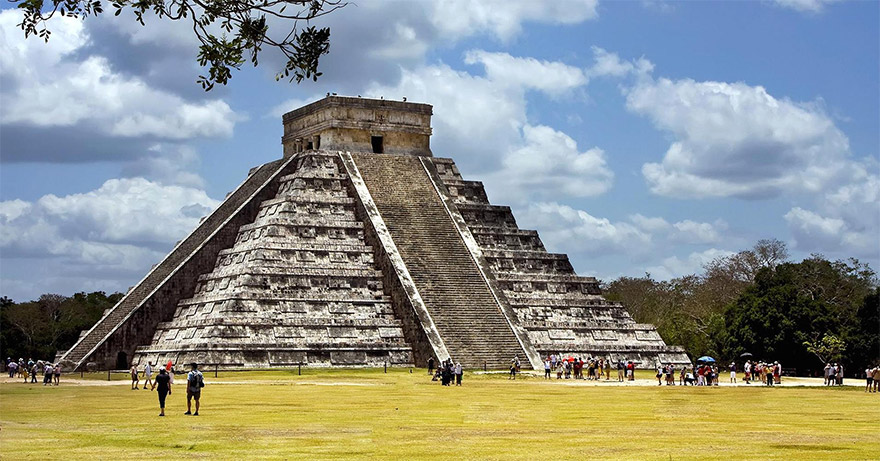
Note the temple pictured above and its resemblance in colour and style to that of the Egyptians. South American pyramids are of course related to Egyptian pyramids. If the Mayans have much in common with the Egyptians, then they must share a common origin. The Egyptians come from Southern India.
"Under the reign of Viswamitra, first king of the Dynasty of Soma -Vanga, in consequence of a battle which lasted five days, Manu -Vina, heir of the ancient kings, being abandoned by the Brahmans , emigrated with all his companions, passing through Arya , and the countries of Barria, till he came to the shores of Masra [Cairo]." (History of India, by Collouca-Batta). Unquestionably this Manu-Vina and Menes , the first Egyptian King, are identical.
Arya , is Eran (Persia ); Barria, is Arabia, and Masra, was the name of Cairo, which to this day is called, Masr, Musr, and Misro. Phœnician history names Maser as one of the ancestors of Hermes ."
"Egypt herself had, in those unknown ages when Menes reigned received her laws, her social institutions, her arts and her sciences, from pre-Vedic India."
Menes is undoubtedly the Manu of the second subrace (5.2 Ancient Egypt) and there is a close connection to India which persists to this day – as any traveler to both nations will attest. If the Mayans have a 'perfect identity of the rites, ceremonies, traditions' of Egypt then it is further proof that their genesis is in India, also known as 'Bharata' in ancient times.
"There is definitely an important connection between the old Vedic people and Maya-ancestors. The Mayas are actually referred to in The Mahabharata, one of the main Hindu scriptures, as a tribe having left the Indian subcontinent. There are sources who have revealed those people to be the same as the Nagas, one of the oldest Indian tribes recorded. Those Nagas seem to have been a people, later called Danavas, with a capital Nagapur. They are referred to in another main Hindu-scripture, the Ramayana, as belonging to a Naga-Maya tribe, who is said to have transmitted their culture towards Babylonia, Egypt and Greece."
Naga is the Sanskrit word for serpent or snake. The feathered serpent represents the Mayan God Kukulcan or Quetzacoatl, a Christ/Krishna-like figure. In those days the ancient serpent religion referred to the Serpents of Wisdom. Mercury or Hermes (Narada – see further in text) – his symbol is the caduceus : two serpents entwined around a staff.
"The four principal groups in ancient India were the Asuras (Assyrians or Indus Valley people), Panis (Phoenicians), Yakhus or Yakshas (subjects of Kubera, god of gold and treasure a.k.a. Nagas) and Mayas. We know them today as the Dravidians (Tamils, Malayalam, etc.)
The non Indus Valley people in ancient days were exceedingly superstitious and fearful of the Mayans. The latter were excellent international shippers and traders, builders and astronomers. Their superstitious enemies thought their accomplishments had to be magic and beyond human ability. They were ultimately driven to Ceylon where they inhabited the province of Maya. Later, they went to the Americas, having been taken there by Kubera and his Yakshas." 'Ceylon' in those ancient times was more than likely the now sunken land to the south of India and connected geographically to the Ceylon of today, Sri Lanka. This is the ancient Tamil country of which today's Tamil Nadu in India is but a small remnant:
The skill of the Mayan astronomers is also well known:
"Recent studies suggests a link between Indus Valley and Mayans of Central America. The studies focused on the calendars of the two advanced civilizations. The Indus Valley inhabitants followed a calendar based on the movements of Jupiter, and the Mayans followed one based on the Venus. In the Puranas, a secondary Hindu scripture, Jupiter, Brihaspati, was acknowledged to be the leader of the gods, while Venus, Shukra, was the leader of the asuras. The texts further state that the devas and asuras lived on opposite sides of the Earth.
Mexico and India are at opposite sides in longitude. The correspondences were pointed out by B. G. Siddarth, director of the B. M. Birla Science Centre in Hyderabad. He also said the Hindu story of the churning of the ocean has been found in carvings in Mexico, as well Mayan representations of a tortoise carrying twelve pillars similar to Indian illustrations. Dr. Ganapati Sthapati of Chennai, a foremost expert on Vastu shatra, the ancient Hindu architecture, has visited the Mayan structures in Central America and found many similarities between the design and construction methods of the Mayans and that of the ancient Hindus."
South of Mexico lays Guatemala, the major centre for the Mayans, yet they ventured north and south of this location, spreading their knowledge widely.
Mayan Language
Language is one of the major keys to determining the movement and migration of races. Two-thirds of all the aboriginal regional names of Mexico are either variations of the name of Lanka or Tamil names of West Indian regions. This is a major key to the understanding of their ancient Sri Lankan origins which, with southern Tamil India, extended much further south, now since sunk hundreds of thousands of years ago.When speaking of their origins, the Mayans (like the Hopis) had several names for their land: Shilanka (Xilanca) – an ancient name of Ceylon (Zeilan-Ka) Shikalanka (Xicalanca) – Ceylon. In Tamil, Shikalam.
A Mayan culture hero was Ishbalanka (Xbalanca) meaning in Tamil, "Shiva of Lanka" who was supposed to have made the footprint on top of Adam's Peak in Sri Lanka; modernly, in line with the prevailing Buddhist culture, it is known as (Gautama) 'Buddha's footprint.' Palenque, the ancient capital of Guatamala, Palenke (Palenque) derives from the Tamil Pal-Lanka, meaning "Protectorate of Lanka." Guatemala (the main habitat of the Mayans) may derive from Gautemala, meaning "A Subsidiary Land of Gautama Buddha." Ceren was a name of Ceylon, some Mayan ruins in El Salvador are called Ceren. Mayon was one of the names of Ceylon's cult religions, still existing among a few aboriginals living on the island.
Asuramaya and the Mayans
"The ancient Hindu and Mayan civilizations exhibit other interesting convergences. Hindu records say that a member of a great race which preceded ours, a highly-developed personage known as Asuramaya, learned all the basic cosmic cycles and used his knowledge to determine the durations of the various geological and cyclical periods of human evolution.
The chronology and computations of their still used Tamil calendar, say the Brahmans, are based upon the works of Asuramaya and upon carefully maintained collateral zodiacal records. Their most ancient extant work on astronomy, the Surya Siddhanta, says that Asuramaya lived toward the end of the Krita-yuga, a former age that ended approximately 2,165,000 years before the present. This would place Asuramaya at something less than 2.5 million years ago."
The figures above are commensurate with the esoteric doctrine, whose source is the same. When the date of the start of the Kali Yuga for the Fifth Rootrace is considered (3,102 BC), then working back from there gives the following table:
Readers can observe where the Satya or Krita age ends (2,165,100 years), about one million years before the start of the first (Hindu) subrace of the Fifth Rootrace. The death of Krishna was supposed to have heralded the Kali Yuga and there may well have been a Krishna (as there have been many Buddhas) in 3,102 BC. But the Krishna referred to in The Mahabharata heralded the Kali Age of the (Fourth) Atlantean race a few million years ago. The date of 3,102 BC is the Kali Yuga of this, our Fifth (Aryan) Rootrace. This fact has caused confusion amongst scholars and is partially responsible for Hindu and Western pundits diminishing the time-scales of the Hindu scriptures. Regarding Asuramaya, H.P. Blavatsky says:
"The best and most complete of all such calendars, at present, as vouched for by the learned Brahmins of Southern India, is the already mentioned Tamil calendar called the "Tirukkanda Panchanga," compiled, as we are told, from, and in full accordance with, secret fragments of Asuramâya's data. As Asuramâya is said to have been the greatest astronomer, so he is whispered to have also been the most powerful "Sorcerer of the WHITE ISLAND, which had become BLACK with sin," i.e., of the islands of Atlantis.
The "White Island" is a symbolical name. Asuramâya is said to have lived (see the tradition of Jhána-bhaskara) in Romaka-pura in the West: because the name is an allusion to the land and cradle of the "Sweat-born" of the Third Race. That land or continent had disappeared ages before Asuramâya lived, since he was an Atlantean; but he was a direct descendant of the Wise Race, the Race that never dies. Many are the legends concerning this hero, the pupil of Surya (the Sun-God) himself, as the Indian accounts allege … Asuramâya, "as great a magician as he was an Astrologer and an Astronomer.""
The 'third race' is of course one of the latter subraces of the (third) Lemurian Rootrace, from where the Hindus and Egyptians have their ancient genesis. (More on the 'Wise Race' later.) Due to the deterioriation of the Atlanteans, what were once divine names of the Asuras in that race gradually became applied to those who had abused their god-given powers until, "Asura was the generic appellation of all the Atlanteans who were the enemies of the spiritual heroes of the Aryans (gods)."
The word Asura comes from Surya, Sanskrit for the sun; Asuramaya learned his art from studying and meditating upon the Sun. In the Yoga Sutras of Patanjali it is said that, "Through meditation, one-pointedly fixed upon the sun, will come a consciousness (or knowledge) of the seven worlds." Maya is illusion, particularly in its densest manifestation upon the physical plane, the most powerful domain of the sorcerers of those days. All these events were occurring at the time of the gradual emergence of the Fifth (Aryan) Rootrace and the conflicts between the old and new races went on for some few million years after the original Mahabharata.
It is interesting to note that The Lord of the Rings is a story gleaned by J.R.R. Tolkien from our racial memory and is probably a fairly accurate account of those Atlantean days of war, monsters, giants, angels and magic. The chief sorcerer against whom Gandalf (the White) fights is Saruman, whose name is virtually an anagram of Asuramaya. The Hobbits are of course, Humanity and perhaps their six toes on either foot represent the coming Sixth Rootrace! In the emerging new race Asuramaya had his counterpart (and mentor) in Narada or 'Pesh-Hun', the old Vedic Rishi from whom he learned all, a highly elevated Mercurial type:
"… in Hindu Esotericism, Narada—who is called in Cis-Himalayan Occultism Pesh-Hun, the "Messenger," … is the sole confidant and the executor of the universal decrees of Karma … who leads and guides human affairs from the beginning to the end of the Kalpa. "Pesh-Hun" … is the mysterious guiding intelligent power, which gives the impulse to, and regulates the impetus of cycles, Kalpas and universal events. He is Karma's visible adjuster on a general scale
… Narada … surpasses Garga's Guru in his knowledge of cyclic intricacies. It is he who has charge of our progress and national weal or woe. It is he who brings on wars and puts an end to them. In the old Stanzas Pesh-Hun is credited with having calculated and recorded all the astronomical and cosmic cycles to come, and with having taught the Science to the first gazers at the starry vault. And it is Asuramâya, who is said to have based all his astronomical works upon those records, to have determined the duration of all the past geological and cosmical periods, and the length of the all the cycles to come, till the end of this life-cycle, or the end of the seventh Race.
There is a work among the Secret Books, called the "Mirror of Futurity," wherein all the Kalpas within Kalpas and cycles within the bosom of Sesha, or infinite Time, are recorded. This work is ascribed to Pesh-Hun Narada. There is another old work which is attributed to various Atlanteans. It is these two Records which furnish us with the figures of our [The Hierarchy] cycles, and the possibility of calculating the date of cycles to come …
The chronology and computations of the Brahmin Initiates are based upon the Zodiacal records of India, and the works of the above-mentioned astronomer and magician—Asuramaya. The Atlantean zodiacal records cannot err, as they were compiled under the guidance of those who first taught astronomy, among other things, to mankind."
Note one of Narada's appellations is 'The Messenger' equivalent to Mercury, Hermes or the Egyptian Thoth. (Note the earlier reference to the Mayans coming from the 'Naga tribe'.)
The Mayans: Master Astronomers
As noted earlier, The studies focused on the calendars of the two advanced civilizations. The Indus Valley inhabitants followed a calendar based on the movements of Jupiter, and the Mayans followed one based on the Venus. In the Puranas, a secondary Hindu scripture, Jupiter, Brihaspati, was acknowledged to be the leader of the gods, while Venus, Shukra, was the leader of the asuras."
The Mayans are well known for their astronomical accuracy through their studies of the cycles of Venus, yet their whole system of astronomy and cycles derives from their ancient Hindu past:
"Modern students of the ancient Mayan numerical glyphs have found that the dating of major series of events noted on Mayan stelae invariably give such reckonings in terms of the time elapsed since a date known as 4 Ahau 8 Cumhu. They know that for the Maya chroniclers this date represented a commencement point in time-reckoning of such awesome magnitude that it was central to all else in subsequent Maya history; but they don't know what it meant or why it was so important to the latter.
Among other ancient nations only one, the Hindu peoples of the Indian subcontinent, is known to have developed a system of calendrics accounting for such vast periods of time. For computing the age of the earth and various geological and other epochs, as well as the age of mankind, the learned Brahman caste still employs a Tamil calendar derived from archaic astronomical data, known as the "Tirukkanda Panchanga" (The Secret Doctrine, II:49-51)."
Other diverse commentators corroborate these facts:
"The Mayan culture flourished in Mesoamerica during the early Christian era, before being completely wiped out by the Spanish conquest. Astronomy played a significant role in Mayan culture. Venus in particular had a pre-eminent status. Testimony to this rich tradition is borne out by Mayan temple art and the few available Codices, or sacred books, of the Mayans. Western scholars have attempted to relate the Mayan concepts to those of Greek astronomy. The sidereal Mayan astronomy is more akin to the Hindu system and does not easily fit into the Greek model."
The theories about Greek astronomy are related to the misapprehension of cycles by historians and researchers down the ages – both east and west. Greece is a much more modern and recent culture, India and the Mayans are very ancient. Confusion has arisen do to cross fertilisation of ideas between Greece and India in the past few thousand years, as well as the 'Greek-centric' view held by many western historians.
"Striking similarity is found between certain Mayan and Puranic stories, and their related astronomical interpretation. In the Puranas, Lord Vishnu is represented as resting on the serpent Ananta or Sesa, after having dissolved all creation. The serpent represents the eternity of time (Ananta), and the "remainder" (Sesa) in subtle form, of prakriti, the germ of all that has been and will be. After waking up from the yoganidra, Vishnu rides on the eagle Garuda. Both Garuda and Sesa are shown in association with Vishnu in the temples of India.
It is said that Garuda represents the Vedas and the solar deities, and Sesa represents the watery deities. The serpent [Naga] is of great significance in the Mayan culture also. A supreme example is the serpent of sunlight and shadow seen at Chichén Itzá. At the time of the equinoxes, as the Sun moves from east to west, a pattern of light and shadow appears on the west balustrade of the north stairway of the Castillo at Chichén Itzá. This display resembles a descending snake whose head is the monumental serpent head carved out of stone at the foot of the stairs. The feathered serpent represents the Mayan God Kukulcan, who is associated with rain water and new life, among other things. Kukulcan appears to be Sesa and Garuda combined into one."
"In the book The Conquest of the Maya by J. Leslie Mitchell, he explains that the basis of the old Maya empire was not of the work of the ancestors of the present day Maya, but was an import from the same foreigners that built the palaces and temples of the Chams and Khmers in Cambodia, and the temples in Java. He also points out the similarities between the Maya rain-god Chac and the Vedic Indian Indra, and the Maya monkey-god and the Vedic Hanuman. The Vedic origin is further enhanced by the frequency that the elephant motif is found in Maya art, especially the earlier works of the Maya, such as at Copan, although the elephant never existed in the region."
The reader will note that the temples of Cambodia are commented upon in the newsletter "Ancient Cambodia: Angkor Wat and the Egyptian Connection."
The ancient Khmer (Cambodian) culture probably belongs to the second subrace of the Fifth Rootrace (5.2), the same as the Egyptians and Mayans, but of a different branchrace lineage. One is reminded of the vast extent of the Indian empire that stretched from South East Asia to Persia (Iran); it also extended southward to the old Tamil country, since sunk.
"One reason for these similarities between the Americas and India is that in ancient Vedic times there were two great architects, Visvakarma of the demigods or Aryans, and Maya of the asuras. Surya Siddhanta was revealed to Mayasura by Sun. The Mayan people, also known as technicians, were no doubt named as such because of being connected with this person named Maya or Mayasura and Maya Danava. They were a part of his clan or tribe. They had fallen away from the Vedic way of life and were sent or escaped to the region of Central America. They also carried with them much of the science of astronomy and navigation for which this Mayasura was known.
Mayasura's knowledge is more fully explained in the classic work of Indian Vedic astronomy known as the Surya Siddhanta for which he is given credit. Many people have wondered from where the Mayan acquired their astronomical knowledge. This would explain how the Mayan people had such a high degree of understanding in astronomy, from which they also developed their calendar. The Mayan calendar was a science they had long developed, carrying it with them from their previous location and civilization."
Note the reversal of Asuramaya's name but the same historical details are intact. The Mayans were known as 'technicians' a very interesting word that denotes strong influence of the Fifth Ray of Science, which of course is related to astronomy. This 'fifth aspect' not only corresponds to the Fifth Rootrace and 'fifth continent' mentioned earlier but to possibly a fifth branchrace (clan/tribe) 'signature' such as 5.2.5 – the 5th branchrace of the second subrace of the Fifth Rootrace.
The second subrace of the Fifth Rootrace (5.2) came forth around 860,000 years ago – at the second great Atlantean flood and coincident with the migration from India that established the Egyptian civilisation on the Nile.
This map is one of many speculations of the location of the Atlantean islands. It has been included to illustrate how it would not have been very difficult for the ancient Mayans (renowned mariners), to 'island hop' their way across the Atlantic from Africa to where Guatemala is today; if they came the same route as the Egyptians from India and kept heading west.
"Like the Vedic culture, the Maya had a pantheon of demigods, many of which have similarities to the Vedic deities. Mayan gods like Xiuhtechutli and Xipe Totec have their Vedic counterparts in Indra and Agni. Indra, like Xiuhtechutli, was the rain god and guardian of the Eastern Quadrant, and Agni, similar to Xipe Totec, was the god of sacrificial fire, born in wood and the life force of trees and plants. Then there is the Vedic Ushas, the beautiful goddess of Dawn or Sky, who is similar to the Mayan view of Venus, goddess of Dawn … Furthermore, hymn 121 of the book ten in the [Hindu] Rig Veda is very similar to the description of creation as found in the [Mayan] Popul Vuh."
None of this pantheon of gods would be complete without the legendary Quetzalcoatl:
"A Mesoamerican Christ: Quetzalcoatl is to the New World what Christ is to Europe [or Krishna to India]: the center of a religious cosmology and the pre-eminent symbol of the civilized nations of Mesoamerica. Both were considered to be men who ascended into heaven upon their death; Christ to sit at the right hand of God, Quetzalcoatl to become the Morning Star [Venus]. Both were tempted by evil powers; Christ by Satan, Quetzalcoatl by the wizard-god Tezcatlipoca.
And both were prophesied to one day return to earth, Christ as the Prince of the Kingdom of Heaven, Quetzalcoatl as a god-king returned to claim his kingdom in Central Mexico. To understand the life and teachings of Jesus Christ is to understand Christianity, the root religion of what we refer to as Western Civilization. To understand the life and mystery of Quetzalcoatl is to understand the religious thought of what we call Mesoamerica."
Mayan Calendar
"The Vedic, Maya, and Hopi calendars all describe our current age as the fourth world. The Maya and Hopi calendars also describe the ending of a great age around the year 2000 (several Mayan calendar cycles end at winter solstice, 2012). Mayan cycles describe the Earth's Great Year (a ~24,000-year cycle caused by the Earth's wobble) as well as an additional rotation of our sun and galaxy around Alcyon, central star of the Pleiades. The Maya are one of many cultures (as far-flung as the Australian Aborigines, the ancient Greeks, and several Native American nations) with stories about the Pleiades."
"Incredibly, at the early Maya site of Izapa in southern Mexico, the galactic cosmology and a profound spiritual teaching are preserved. Izapa speaks to us of the Galactic Alignment in 2012 as a transformative nexus in time, a still-point turnabout, inviting us to reconnect with our cosmic heart and eternal source."
"The doctrine of the World's Ages (from Hindu Yugas) was imported into Pre-Columbian America … the Mexican sequence is identical with the Hindus …The essential fact remains that they were derived from a common source … It would be ridiculous to assert that such a strange doctrine was of spontaneous origin in different parts of the Old and New Worlds."
The above passage is a more exoteric view but nonetheless testifies to the origin of Mayan astronomy. These yugas contain other yugas within them, or cycles within cycles:
"The Dvapara Yuga differs for each Race. All races have their own cycles, which fact causes a great difference. For instance, the Fourth Sub-Race of the Atlanteans was in its Kali-Yuga, when destroyed, whereas the Fifth was in its Satya or Krita Yuga. [Approximately 4 million years ago.] The Aryan Race is now in its Kali Yuga [3,102 BC] , and will continue to be in it for 427,000 years longer, while various "family Races," called the Semitic, Hamitic, etc., are in their own special cycles. The forthcoming 6th Sub Race [of the Fifth Rootrace or 5.6] — which may begin very soon—will be in its Satya (golden) age while we reap the fruit of our iniquity in our Kali Yuga."
These dark and golden ages (Kali and Satya) overlap as one cycle finishes and another starts. The above statement is confirmed in the Puranas where Lord Krishna tells Ganga Devi that a Golden Age will come in the Kali Yuga. Lord Krishna predicted that this Golden Age will start 5,000 years after the begnning of the Kali Yuga, and will last for 10,000 years.
The Mayan Calendar measures the unfolding evolution of consciousness – as do all cycles that are impelled by the rays, planets, yugas or zodiac signs; they all embody a much higher consciousness it is actually two calendars that are closely inter-related: The Tzolkin (Daily Calendar) of 260 days, and the Tun (Prophetic Calendar) of 360 days. These two 'calendars' intermesh like gears, the smaller Tzolkin with 260 'teeth' (days) intermeshing with the larger Tun (360 'teeth'/days), then as the Tzolkin turns so does the Tun.
It takes 72 turns of the Tzolkin calendar ('gear') and 52 turns of the Tun calendar ('gear') for each 'tooth' (day) of each 'gear' (calendar) to come into contact. i.e. 18,720 days (72 x 260 or 52 x 360), or approximately 51 Gregorian calendar years. (18,720/365).
The carvings in the stone represent the four cycles of creation and destruction. The skull at the center depicts the god, Tonatiuh, the fifth sun. The calendar was also adopted by the Aztec and Toltec nations after renaming the days and months.
The Maya of the Mayan Calendar (Maya = Illusion)
"One of the secrets of initiation is concerned with the apprehension of cycles , and with their duration … before a man is considered a true occultist ."
One problem with comprehension of the Mayan Calendar is the hype about it in 'New Age' circles. Esoterically the whole subject is 'glamoured' – there have been so many speculations, claims and distortions by academics, mystics and 'new agers'.
The exact astronomical date in 2,012 is something that the general public tend to get somewhat fixated upon, creating confusion, fear and much futile speculation; this is a perennial problem and other 'significant dates', including the yearly cycle of eclipses, that continually attract superstitious and uninformed reactions. John Major Jenkins, a leading scholar of the Mayan Calendar, has the following to say:
"So, in point of fact, we have a previous testimonial of Don Alejandro, from an interview he did with reporters that was published as "The Mayan Worldview of the Universe" by Patrisia Gonzales and Roberto Rodriguez, Universal Press Syndicate. The Denver Post, January 2, 2000. In it, we read:
"Based on thousands of years of astronomical observation, a cataclysm is indeed predicted by indigenous elders, as opposed to "prophesized." No one is predicting that at the strike of midnight, Dec, 20, 2012, the world will end. Instead, Mayan elders predict that the cataclysm can occur within a year or 100 years—and the cause would be something astronomical as opposed to metaphysical."
[Jenkins continues…] I've always agreed with this idea, that we should think of the 2012 end date as being a "zone" stretching on the order of decades. I don't agree with the above view that the end date is only an astronomical event, for the physical dimension and the metaphysical (or spiritual) dimension unfold in parallel. We further read in the interview that:
"We don't know what will happen in the next few days or in the next 12 years. What we do know is that it wouldn't hurt to listen to the worlds of Don Alejandro who said that on Dec. 20, 2012 Mother Earth will pass inside the center of a magnetic axis and that it may be darkened with a great cloud for 60 or 70 hours and that because of environmental degradation, she may not be strong enough to survive the effects. 'It will enter another age, but when it does, there will be great and serious events. Earthquakes, marimotos (tsunamis), floods, volcanic eruptions, and great illness on the planet Earth. Few survivors will be left.'"
[Jenkins continues…] "Thus, beginning on December 20, as stated, the events stretch almost three full days ("60 or 70 hours") through December 21st. The Earth passing "inside the center of a magnetic axis" is a striking description and sounds like the way I described the alignment in the last chapter to Maya Cosmogenesis 2012. "Darkened by a great cloud" almost sounds like a reference to the dark-rift in the Milky Way. Notice the difference between this conception of "earth in the darkness" and my alignment description — where I describe it as the sun passing through the dark-rift, through the "galactic axis," with different magnetic or gyroscopic effects on either side. I suppose Don Alejandro's wording works fine, it's just a translation or interpretation of where the effect is really to be felt (on Earth, ultimately) …
"He [Carlos] said Mayan Daykeepers view the Dec. 21, 2012 date as a rebirth, the start of the World of the Fifth Sun. It will be the start of a new era resulting from and signified by the solar meridian crossing the galactic equator, and the earth aligning itself with the center of the galaxy. At sunrise on December 21, 2012 for the first time in 26,000 years the Sun rises to conjunct the intersection of the Milky Way and the plane of the ecliptic. This cosmic cross is considered to be an embodiment of the Sacred Tree, The Tree of Life, a tree remembered in all the world's spiritual traditions. Some observers say this alignment with the heart of the galaxy in 2012 will open a channel for cosmic energy to flow through the earth, cleansing it and all that dwells upon it, raising all to a higher level of vibration.""
Interesting to note that the winter solstice period (in the northern hemisphere) will have its inherent symbolism of the 'greatest darkness' of winter extraordinarily amplified within the cosmic macrocosm in 2012. The winter solstice is a time of initiation where the candidate to the mysteries must 'find their way through the dark'. The conjunction of the Sun with Pluto in December 2012 signifies the darkness of the underworld experience, transformation and initiation. The Moon is conjunct Uranus in Aries, reflecting the new revolutionary cycle that will begin in consciousness. Perhaps Humanity has an opportunity to do this en masse? A shift that may occur several years around this date is confirmed by other sources:
"In the time of the Buddha and through the stimulation He produced there was a great gathering in of Arhats [4th degree Initiates]. These were men who had achieved liberation through self initiated effort. This period, in our Aryan race, marked a climax for the East . Since then the tide of spiritual life has steadily flowed westward, and we may now look for a corresponding climax in the West , which will reach its zenith between the years 1965 and 2025."
Source: esotericastrologer.org

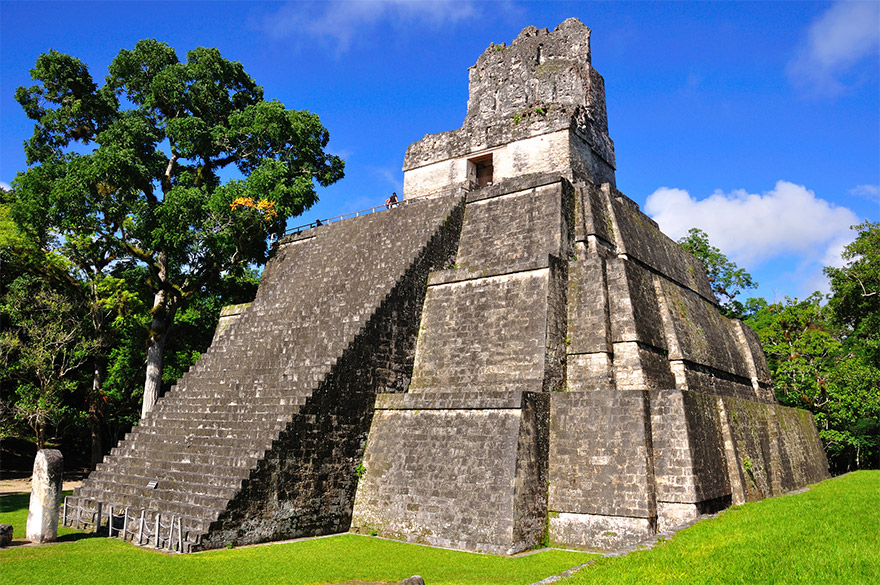
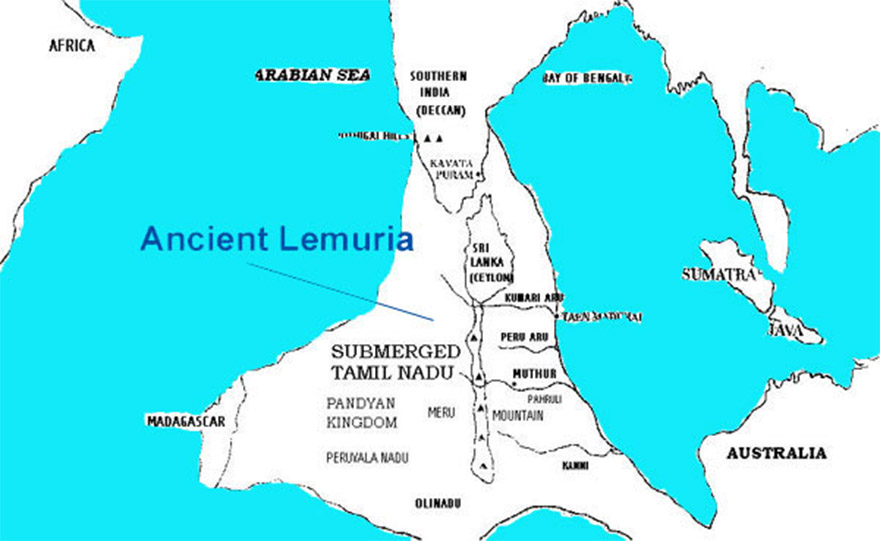
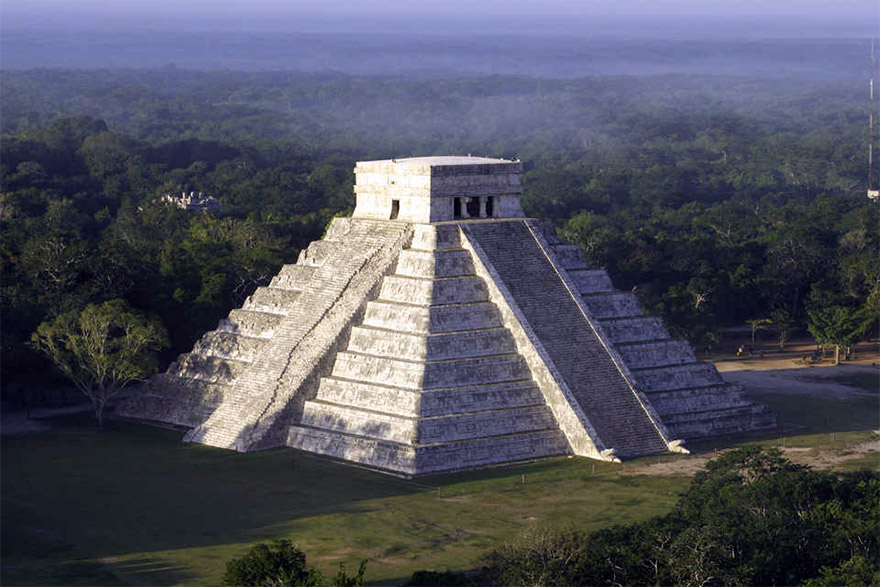
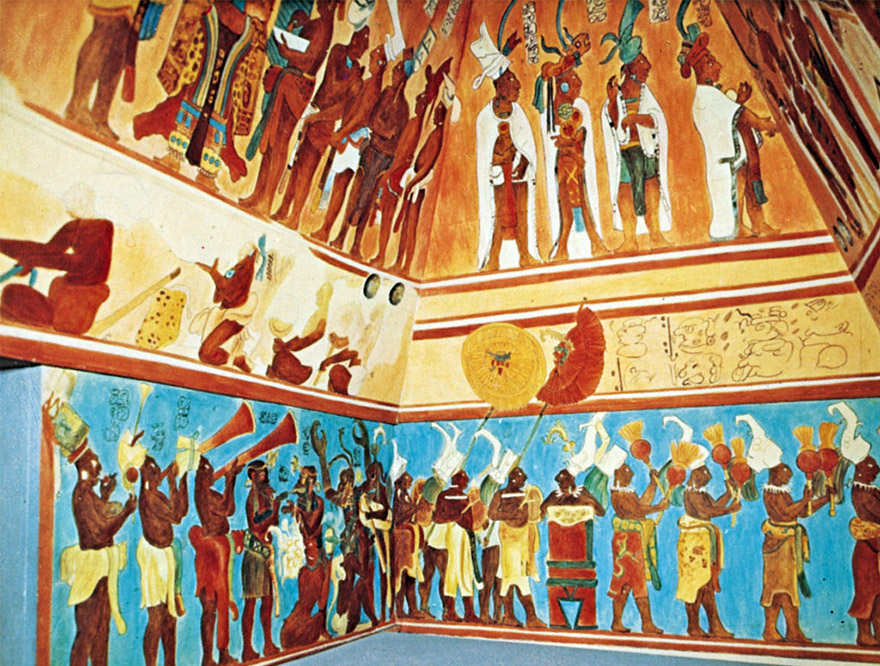
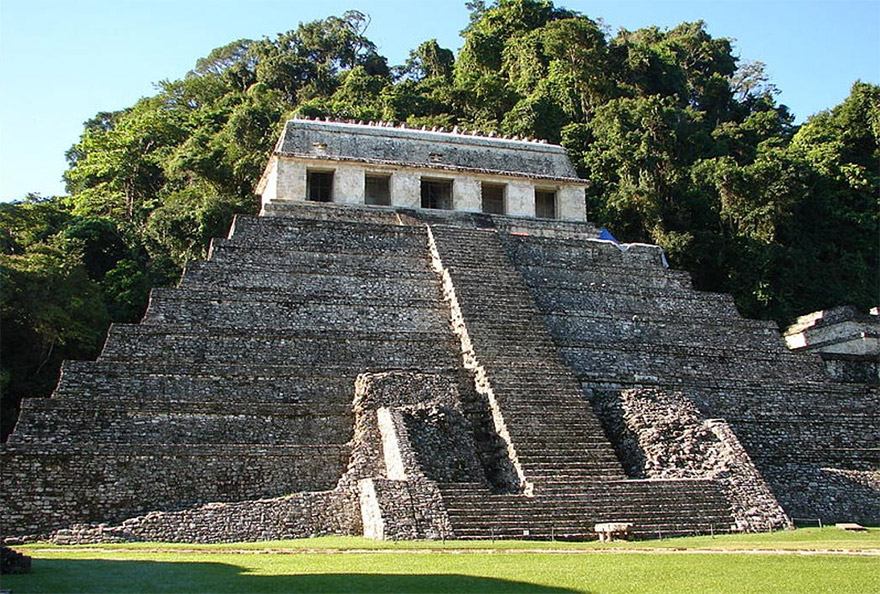

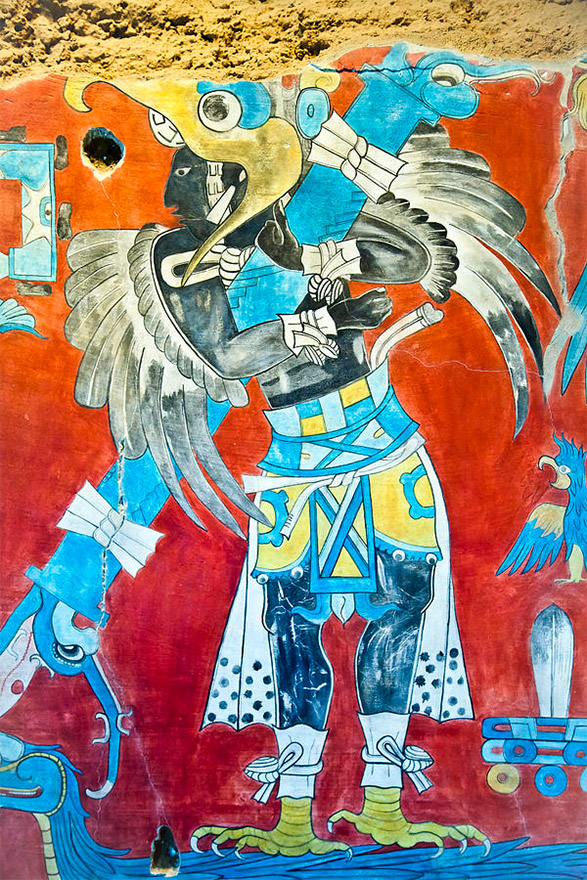
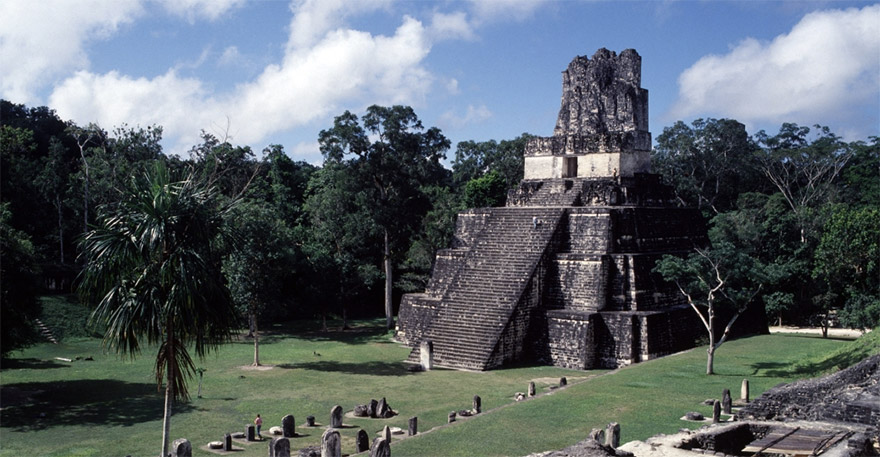
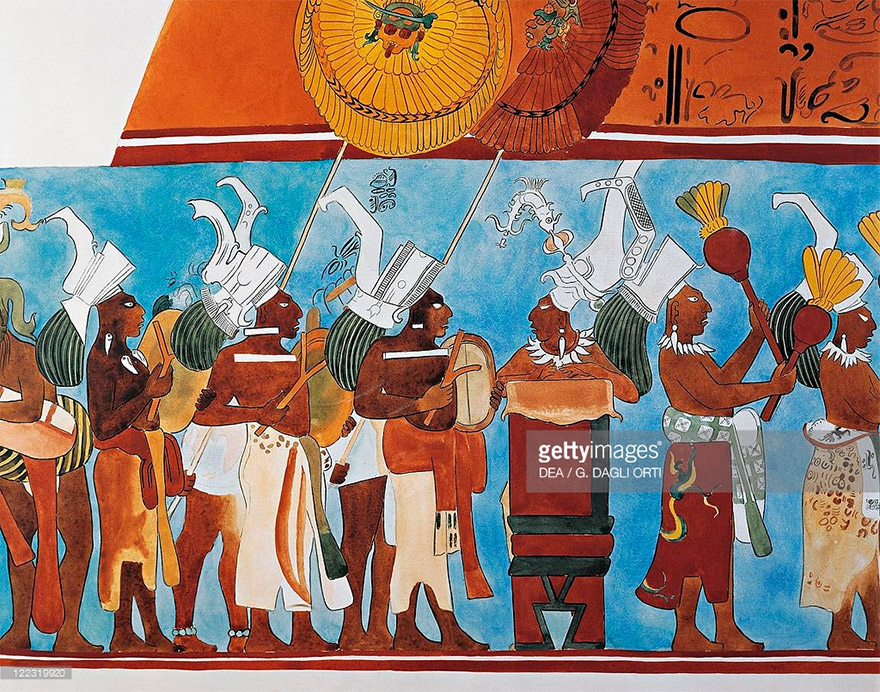
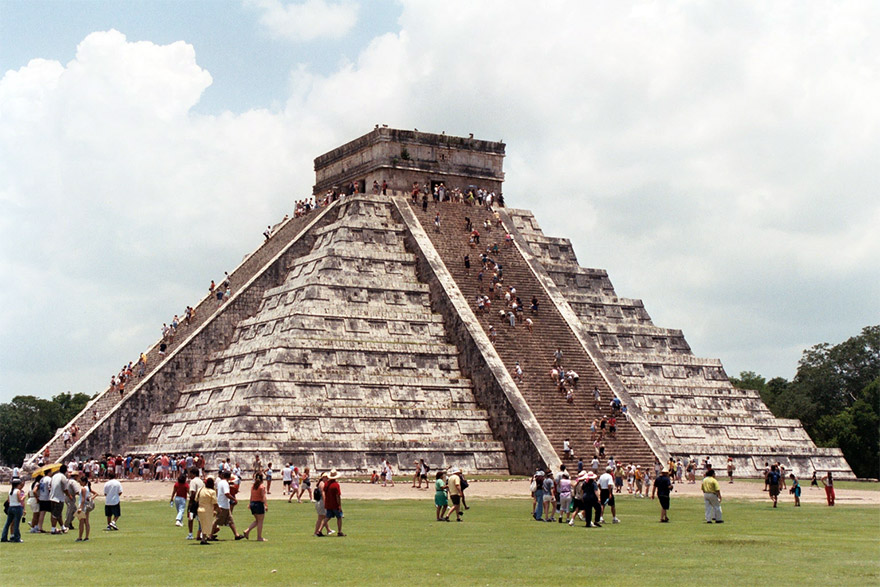
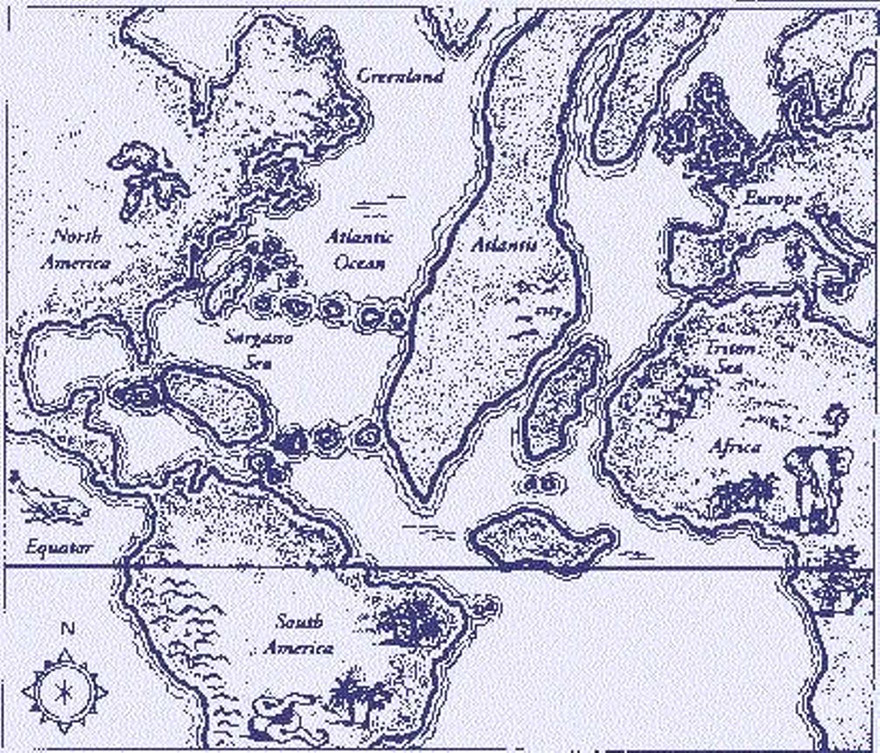
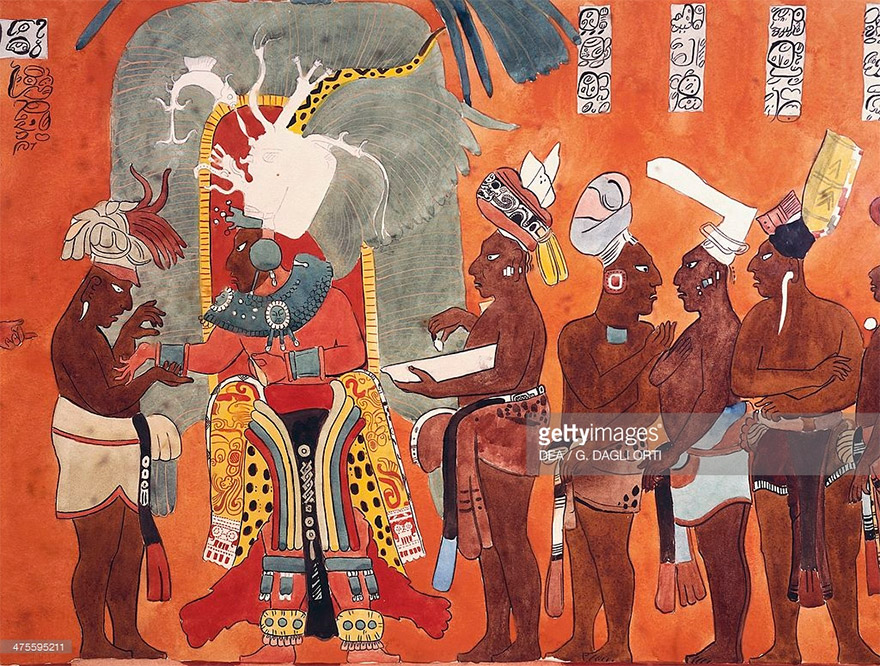

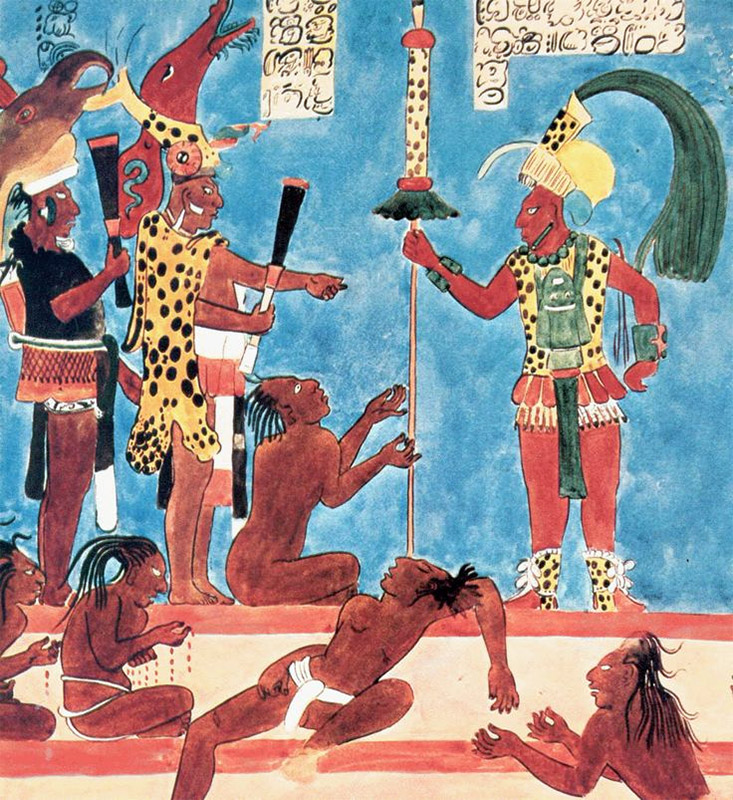









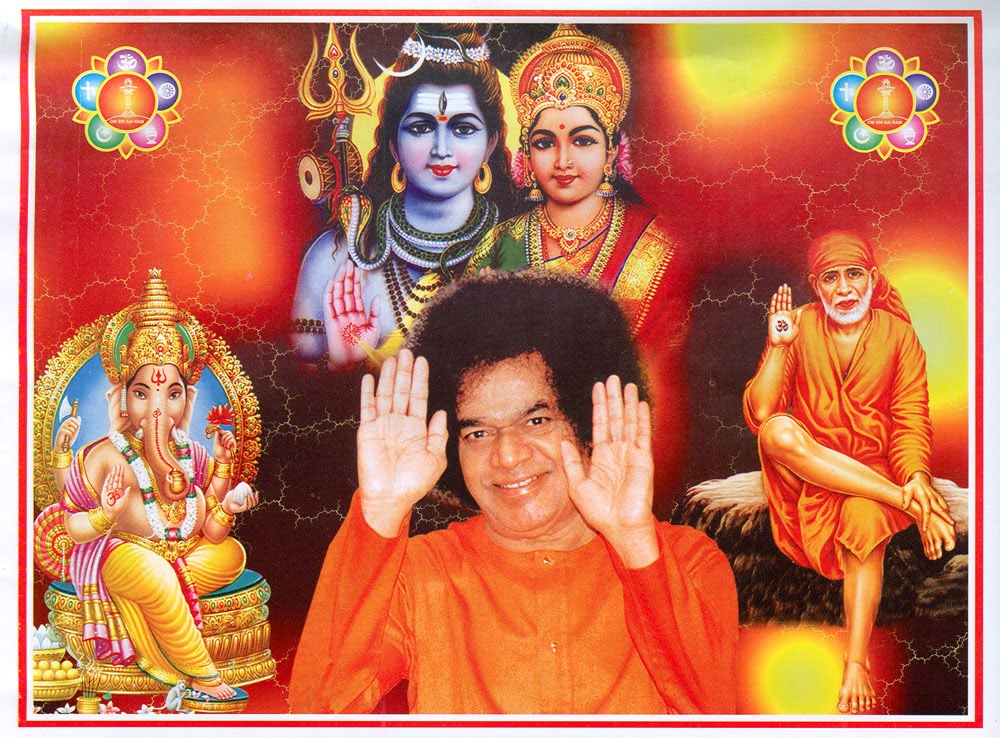



No hay comentarios :
Publicar un comentario